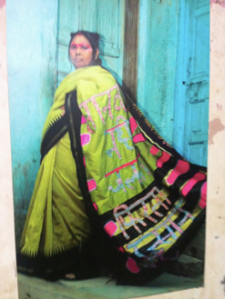Almost five years ago to the day I received the both happy and terrifying news that I was pregnant. I was living in Delhi at the time and received extremely high-quality care and support through my private health care. At the second scan appointment, I had to sign a very detailed form stating that it was illegal for me to ask the Obstetrician the sex of the baby. If I were to do so then they could refuse to treat me and that were the Obstetrician to accede to my request they would be sacked. Coming from the UK this may seem quite shocking, however, living in a country were up to 12-million unborn girls have been aborted in the past 3 decades this is a more than appropriate response.
And yet, as I was speaking to some of my friends about the form I was startled to hear their response “well, if you want to know there is a private practice you can attend where the Obstetrician won’t tell you the gender but… they will tell you what colour you should paint the bedroom”. Rather than these educated women, both ex-pat and from India, agreeing with the principle, enshrined in law, that it is illegal to request the sex of a foetus, they had merely paid their way around this. And this small microcosm plays out across India, with wealthier, better-educated couples being the worst offenders, putting paid to hopes that socio-economic progress would lead to a change in attitude. Although all strata of Indian society share a preference for sons, better-off families have access to and can afford the ultrasound tests to reveal the sex of a foetus.
The term for this is genericide and it is worse than any genocide seen before and yet barely discussed. The reasons behind this are many and complex and far better people than I have written extensively on this subject. The reality of this being unchecked for decades (particularly in India and China) means there is a paucity of women of marriageable age – indications are that an increase in sex trafficking and child brides in India may be a response to this.
What can be done? “Women’s empowerment is critical in promoting change in the attitudes, behaviour and expectation in the patriarchal Indian society. The increasing involvement of women in the decision making process both financial as well as household influences her reproductive choices and desires. If the women are empowered then she can take decisions with respect to her own health, her family size and contraceptive use and articulate her views and desires. An empowered woman is more likely to take decisions of her family and health and is less likely to exercise son preference”. We just need to get on and make this happen now.
Economic empowerment is key to this and this is what Just Clothing is aiming to do – one step at a time.






